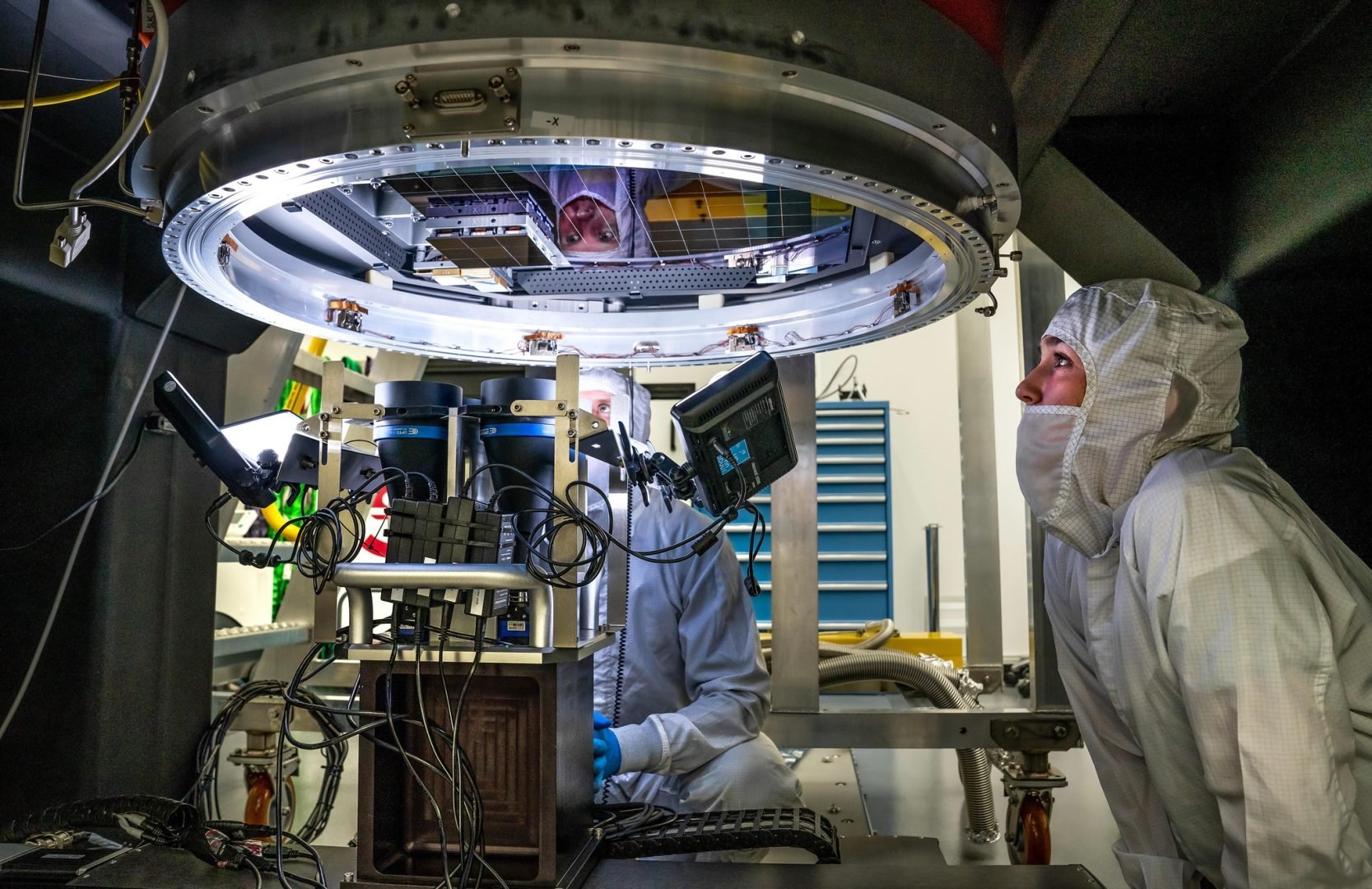

After two decades of dedication, scientists and engineers have completed a revolutionary instrument – the Legacy Survey of Space and Time (LSST) Camera. This colossal camera, the largest ever built for astronomy, will soon begin capturing the cosmos in unprecedented detail. The scientists promise it will unlock the secrets of dark matter, dark energy, and the Milky Way. Exciting, isn’t it?!
A camera unlike any other
Imagine a camera the size of a small car with a lens wider than five feet – that’s the LSST Camera. This marvel of engineering boasts a resolution so high it would require hundreds of ultra-high-definition TVs to display a single image.
“Its images are so detailed that it could resolve a golf ball from around 15 miles away, while covering a swath of the sky seven times wider than the full moon,” said SLAC professor and Rubin Observatory Deputy Director and Camera Program Lead Aaron Roodman. These images with billions of stars and galaxies will help unlock the secrets of the universe.
The LSST Camera’s primary mission is to map the positions and brightness of a vast number of celestial objects. This data will be instrumental in the hunt for dark matter and dark energy, the mysterious forces shaping the universe’s expansion.
By studying the subtle bending of light by massive galaxies (weak gravitational lensing), the camera will reveal the distribution of dark matter across time. Additionally, patterns in galaxy distribution and supernovae observations will further illuminate the nature of dark matter and dark energy.
Potential uses of the LSST Camera
As you can definitely guess, the LSST Camera isn’t made for casual snaps. But other than the distant cosmos, its gaze will be pointed at closer to home. It’s expected to increase the number of known objects in our solar system by ten. This could help us understand how the solar system formed and identify potential threats from asteroids.
The camera’s detail will allow scientists to create a far more precise map of our home galaxy, revealing its structure, evolution, and the nature of objects within it.
Researchers will also use the camera to observe how the night sky changes, including how stars die and how matter falls into supermassive black holes.


International collaboration
The LSST Camera is a result of international collaboration. Labs like Brookhaven National Laboratory (sensor array), Lawrence Livermore National Laboratory (lenses), and France’s National Center for Scientific Research (filter system) all played crucial roles in its development.
“The team at Brookhaven Lab, some of whom have been working on the project for more than 20 years, is excited to see the completion of the LSST Camera,” said Paul O’Connor, a senior physicist in Brookhaven’s Instrumentation Division. “Our fast, ultra-sensitive CCD modules, which we developed with multiple collaborators, will contribute to the breakthrough science delivered by the Rubin Observatory over the next decade, and we look forward to collaborating on this flagship astronomical survey.”


SLAC Director John Sarrao said the camera is a “tremendous accomplishment” for the lab and its partners.
“The LSST Camera and Rubin Observatory will open new windows into our universe, yielding deep insights into some of its greatest mysteries while also revealing wonders closer to home. It’s exciting to see SLAC’s scientific and technical expertise, project leadership and strong global partnerships come together in such an impactful way. We can’t wait to see what’s next.”
[via Gizmodo; lead image credits: © Jacqueline Ramseyer Orrell/SLAC National Accelerator Laboratory]






